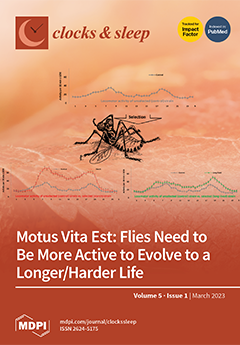Sleep patterns and problems vary in relation to internal (e.g., sex, age, circadian preference) and external (e.g., social structures) factors. The main aim of the present study was to describe habitual sleep patterns and chronic sleep problems in a population-based sample of Norwegian
[...] Read more.
Sleep patterns and problems vary in relation to internal (e.g., sex, age, circadian preference) and external (e.g., social structures) factors. The main aim of the present study was to describe habitual sleep patterns and chronic sleep problems in a population-based sample of Norwegian adults. During spring 2022, a sample of 1028 adults completed an online survey on sleep habits and problems. Response rate was 33.5%. The survey included the Munich ChronoType Questionnaire and items on circadian preference and chronic sleep problems. Mean workday sleep duration was 7:19 h (±199 min), and shorter in males (
p = 0.035) and evening persons (
p = 0.003). Short workday sleep duration (<6 h) was reported by 3.1% and was associated with evening preference (
p = 0.001). Mean social jetlag was 0:51 h (±75 min), and longer in males (
p = 0.036), younger adults (
p < 0.001) and evening persons (
p < 0.001). Long social jetlag (≥2 h) was reported by 11.2% and associated with younger age (
p < 0.001) and evening preference (
p < 0.001). Chronic sleep problems (≥3 months) were reported by 44.1%, and associated with female sex (
p < 0.001) and evening preference (
p = 0.002). Results underscore the importance of considering evening circadian preference as a risk factor for short workday sleep duration, long social jetlag and self-reported chronic sleep problems.
Full article






